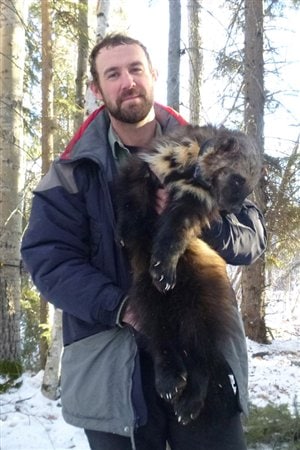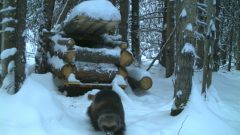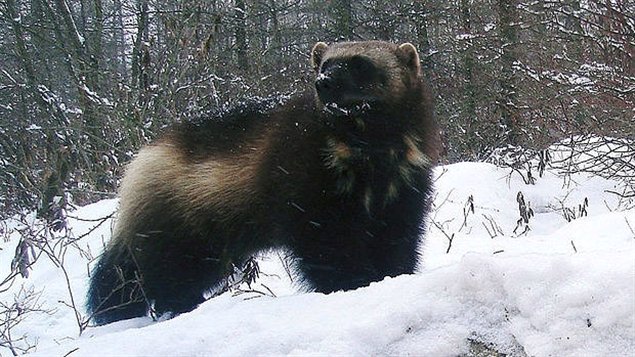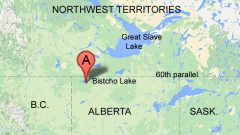They’re sometimes referred to a ghost creature as their tracks are often seen, but the mysterious wolverines themselves, very seldom.
In fact, surprisingly little is known about the creature.
Matt Scrafford is a graduate student in the department of Biological Sciences at the University of Alberta. He is currently engaged in a project in the northwest corner of Alberta, near the boundary with the Northwest Territories to learn more about them where I reached him on his mobile phone.
ListenOne thing that is known about the creature, is that for their size, (about the same as a medium sized dog) they are extremely tough.

The species exists throughout the boreal forest across Canada, mostly in northern areas. Individual ranges are thought to be as much as up to several hundred kilometres.
Scrafford and fellow researchers are live-trapping wolverines, and gathering statistical information on things like size, sex, weight, age and general health information as part of their study.
A general estimate of wolverine numbers is also part of the research, again as so little is known at this point in Alberta and indeed elsewhere right across the country.
Before releasing the animals, the scientists attach radio tracking collars to determine the animal’s range and how the presence of human activity affects their habits.
This latter aspect comes in the form of roads and road building and oil and gas exploration activity. The idea being that with better understanding of the effect such activities have on the animals, the better they will be able to develop mitigating methods.

Trail cam photo of wolverine “M2” as it leaves a trap with a bit of bait meat. The traps have to be built with large logs, as an angry wolverine can chew and scratch their way through these logs in less than 24 hours. Scrafford says the traps are checked twice a day.(temperature recorded at time of photo was -26C )
Although this is the first “field” year in this research, Matt Scrafford has been working on the project for a couple of years now. He says the winter field study aspect will likely continue for another two or possibly three winter seasons.
Matt Scrafford says working in such close quarters with this elusive creature has left him with an even greater respect and admiration for them.
Ontario Natural Resources Ministry- wolverine page
YOUTUBE On the Wolverine Trail- chapter 1
YOUTUBE On the wolverine trail chapter 2








For reasons beyond our control, and for an undetermined period of time, our comment section is now closed. However, our social networks remain open to your contributions.